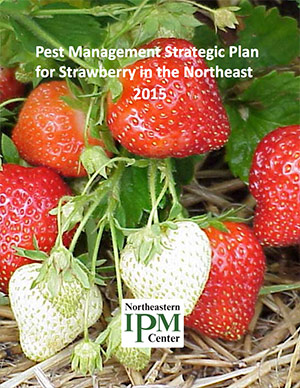Northeast Small Fruit IPM Working Group Releases Strawberry PMSP
 |
Strawberries are an important crop throughout the Northeast and represent a high value and critical component of many diversified vegetable farms. The Northeast Small Fruit IPM Working Group has released an updated Pest Management Strategic Plan (PMSP) for strawberry in the Northeast.
Prior to the 2014 Strawberry PMSP meeting, members of the Northeast Small Fruit IPM Working Group listed the key pests, diseases, and weeds in order of importance in strawberry. The list of key pests for strawberry included five insects, five diseases, and the weeds and vertebrates common in agricultural settings. Key pests are typically persistent problems that need to be managed every year. Cyclamen Mite and Spotted Wing Drosophila are new key pests in the 2015 Strategic Plan. Root Weevils, White Grubs, Black Root Rot complex, and Anthracnose Fruit Rot have advanced to key pest status from occasional pests noted in the 2007 Strawberry Pest Management Strategic Plan.
Of special note, there are other current and emerging pests that annually affect the crop to lesser degrees but can be extremely devastating when outbreaks occur. Strawberry bud weevil (or clipper) is one current pest which may become problematic if not properly managed. Strawberry sap beetle, Strawberry mottle virus, strawberry mild yellow edge virus, and Verticillium wilt have been noted as emerging pest issues.
Contributing to these emerging pest problems is a shift in production to include using day-neutral varieties grown in plasticulture. False chinch bug (Nysius raphanus), strawberry seed beetle (Harpalus rufipes), and leather rot (Phytophthora cactorum) are noted to potentially emerge as problematic in day-neutral production systems.
